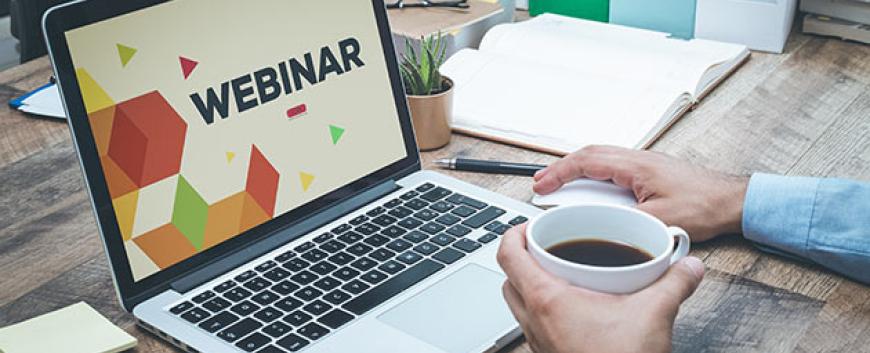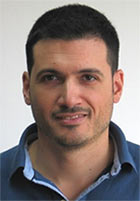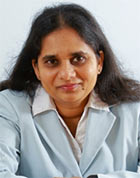Dec
20

Date: 20 December 2023
Time: 8:00 AM ET (New York Time)
Presenter(s): Dr. Georgios Papageorgiou, Dr. Mathini Sellathurai
Original Article: Open access - freely available for download
Published: IEEE Transactions on Signal Processing, June 2021
Abstract
Direction-of-Arrival (DoA) estimation is a fundamental problem in array signal processing with applications in various fields such as radar, sonar, wireless communications, and audio processing. Machine Learning (ML) techniques, and in particular Deep Learning (DL), have recently demonstrated increased accuracy and effectiveness in tasks that involve pattern recognition, data analysis and decision-making. In this talk we present a modern approach to DoA estimation based on DL that can overcome some of the challenges and limitations of conventional methods, such as noise, clutter, interference, jamming, ambiguity, and uncertainty. The approach has the potential to instigate novel functionalities and applications for radar systems, including as adaptive beamforming, cognitive radar, and multi-sensor fusion. We introduce a Convolutional Neural Network (CNN) that predicts angular directions in the low signal-to-noise-ratio (SNR) regime using the sample covariance matrix estimate. The network is trained from multi-channel data of the true array manifold matrix. We adopt an on-grid approach to model the problem as a multi-label classification task and train the CNN to predict DoAs across all SNRs. The proposed architecture demonstrates enhanced robustness in the presence of noise and resilience to a relatively small number of snapshots. Experimental results show significant performance gains in the low-SNR regime compared to the state-of-the-art methods and without requiring parameter tuning in both cases of correlated and uncorrelated sources. Finally, we relax the assumption that the number of sources is known a priori and present a training method where the CNN learns to infer their number and predict the DoAs with high confidence. The increased robustness of the proposed solution is highly desirable in challenging scenarios that arise in several fields, ranging from wireless array sensors to acoustic microphones and sonars.
Biography
 Georgios Papageorgiou (Member IEEE) received the B.Sc. degree in applied sciences from the National Technical University of Athens (NTUA) in 2007, the M.Sc. degree in applied mathematics and the Ph.D. degree in Informatics and Telecommunications from the National and Kapodistrian University of Athens (NKUA) in 2012 and 2016, respectively.
Georgios Papageorgiou (Member IEEE) received the B.Sc. degree in applied sciences from the National Technical University of Athens (NTUA) in 2007, the M.Sc. degree in applied mathematics and the Ph.D. degree in Informatics and Telecommunications from the National and Kapodistrian University of Athens (NKUA) in 2012 and 2016, respectively.
He is currently a Research Associate at the Institute of Biological Chemistry, Biophysics and Bioengineering (IB3) of the School of Engineering & Physical Sciences (EPS) of Heriot-Watt University, Edinburgh. His research interest lies in signal processing, machine learning and optimization with applications in wireless communications and medical imaging (super-resolution ultrasound imaging).
Dr. Papageorgiou was one of the co-organizers of the Ultrasound Localization and Tracking Algorithms for Super Resolution (ULTRA-SR) challenge that was successfully hosted at the IEEE International Ultrasonics Symposium (IUS), October 10-13, 2022, in Venice, Italy. He was a member of the Institute of Sensors, Signals and Systems (ISSS) of Heriot-Watt University (2018-2020) and a researcher at Athens Information Technology (2016-2018). He has previously worked on several European (FP7, H2020) and UK (EPSRC) funded projects as well as industrial research projects. His team won the “Best Booth” award at the EuCNC, Athens, June 27-30, 2016.
 Mathini Sellathurai (Senior Member, IEEE) is currently a professor of signal processing and wireless communications and University Dean for Science and Engineering with Heriot-Watt University, Edinburgh, U.K. She held visiting positions with Bell-Laboratories, Holmdel, NJ, USA, and at The Canadian Communications Research Centre, Ottawa, Canada. She has published over 200 peer reviewed papers with around 5000 citations in leading international journals and IEEE conferences, given invited talks and has written several book chapters. She has been active in signal processing research for the past 20 years and has a strong international track record in multiple-input, multiple-output (MIMO) signal processing with applications in radar and wireless communications. Her present research includes 5G and 6G wireless communications, machine learning/artificial intelligence applied to communications and radar, full-duplex systems, passive radar topography, localization, massive-MIMO, non-orthogonal multiple access, waveform designs, caching technologies, assisted care technologies, IoT, hearing-aids, optimal coded-modulation designs using machine learning, channel prediction, and mm-wave imaging and communications. Dr. Sellathurai has authored two books on communications, is active in global Standards activities (IEEE and ETSI standards and co-authored a book chapter on connected healthcare relevant to IEEE/UL P2933 TIPPSS), and is dedicated to sustainable technology, humanitarian activities, and STEM. She is a recipient of IEEE Women in Communications Engineering Mentorship award for outstanding mentoring (2022), spotlighted by the Antenna and Propagation Society (2021), and is one among 50 women selected to be interviewed by IEEE (2022) for her research in communications. She is a co-recipient of an IEEE ComSoc Best Article Award (2005), Best PhD Thesis Prize (Canada, 2002) and a Public Service Award by Industry Canada for her contributions to tech transfer (2005). She has been an investigator on many FP7/ EPSRC projects of more than £20M. She collaborates with Defence Science Technology Lab (DSTL), and European Space Agency (ESA) and defence and communications industries. She was a past member of the IEEE SPCOM Technical Committee, Editor of IEEE Transaction on Signal Processing and Guest Editor for the IEEE Journal of Selected Areas in Signal Processing She is a member of the Satellite Network of Experts V, ESA 2018-present. She is Fellow of the Women’s Engineering Society, UK
Mathini Sellathurai (Senior Member, IEEE) is currently a professor of signal processing and wireless communications and University Dean for Science and Engineering with Heriot-Watt University, Edinburgh, U.K. She held visiting positions with Bell-Laboratories, Holmdel, NJ, USA, and at The Canadian Communications Research Centre, Ottawa, Canada. She has published over 200 peer reviewed papers with around 5000 citations in leading international journals and IEEE conferences, given invited talks and has written several book chapters. She has been active in signal processing research for the past 20 years and has a strong international track record in multiple-input, multiple-output (MIMO) signal processing with applications in radar and wireless communications. Her present research includes 5G and 6G wireless communications, machine learning/artificial intelligence applied to communications and radar, full-duplex systems, passive radar topography, localization, massive-MIMO, non-orthogonal multiple access, waveform designs, caching technologies, assisted care technologies, IoT, hearing-aids, optimal coded-modulation designs using machine learning, channel prediction, and mm-wave imaging and communications. Dr. Sellathurai has authored two books on communications, is active in global Standards activities (IEEE and ETSI standards and co-authored a book chapter on connected healthcare relevant to IEEE/UL P2933 TIPPSS), and is dedicated to sustainable technology, humanitarian activities, and STEM. She is a recipient of IEEE Women in Communications Engineering Mentorship award for outstanding mentoring (2022), spotlighted by the Antenna and Propagation Society (2021), and is one among 50 women selected to be interviewed by IEEE (2022) for her research in communications. She is a co-recipient of an IEEE ComSoc Best Article Award (2005), Best PhD Thesis Prize (Canada, 2002) and a Public Service Award by Industry Canada for her contributions to tech transfer (2005). She has been an investigator on many FP7/ EPSRC projects of more than £20M. She collaborates with Defence Science Technology Lab (DSTL), and European Space Agency (ESA) and defence and communications industries. She was a past member of the IEEE SPCOM Technical Committee, Editor of IEEE Transaction on Signal Processing and Guest Editor for the IEEE Journal of Selected Areas in Signal Processing She is a member of the Satellite Network of Experts V, ESA 2018-present. She is Fellow of the Women’s Engineering Society, UK
